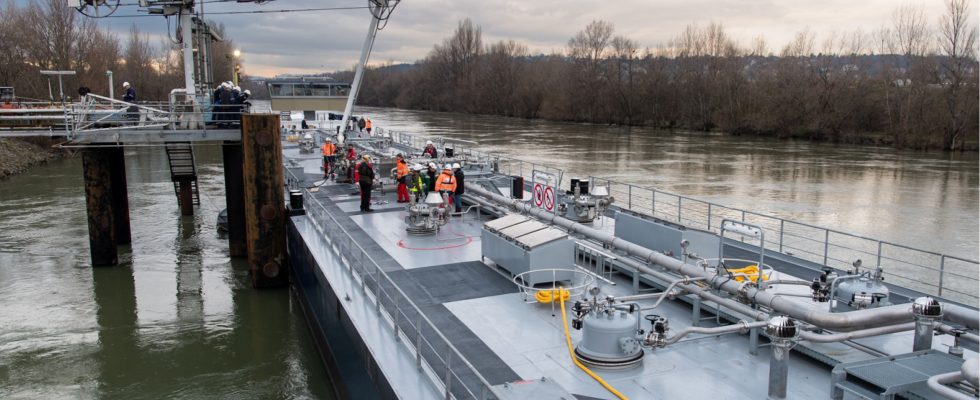A priori, nothing glamorous. A factory Arkema fluorinated gases, a TotalEnergies refinery from which an immense cloud of smoke escapes, a vast production site belonging to Solvay… The chemical valley, south of the Lyon metropolis, brings together chemical industries in 14 municipalities, including a large number of Seveso sites. It is the fifth highest CO2 emitting zone in France.
Not very inviting, and yet… In a country marked by deindustrialization, Greater Lyon demonstrates remarkable dynamism. The “valley” employs 10,000 people in chemistry, energy and the environment, a quarter of whom focus on research and development. “Over the last two years, industrialists have recruited another 2,000 people,” says Bruno Bernard, president of the Lyon metropolitan area. The ecosystem even attracts foreign groups, like the Chinese chemist Adisseo or Elkem, a Norwegian manufacturer of advanced silicon-based materials.
Along with health, the chemical industry constitutes one of the two strong points of the Lyon economy. Public authorities are driving forces in its development. The Chemistry Valley mission brings together industrial and academic stakeholders every month to take stock of the projects. “There is real animation on the part of the metropolis,” appreciates Jean-Francis Spindler, director of the Solvay research center in Saint-Fons and president of the collaborative innovation platform Axel’One. Led by environmentalists since the 2020 municipal elections, the intercommunality finances innovation through a seed fund of 80 million euros to which it contributed around thirty million – the rest comes from the metropolis of Saint-Etienne and private partners. “Our objective is to develop a strong and diversified industry while reducing chemical risks for residents,” insists Bruno Bernard.
“Selective attractiveness”
In fact, if the reindustrialization previously advocated by Gérard Collomb is not called into question, the new majority has set increased demands in terms of sustainability. It excludes polluting companies and highlights “selective attractiveness”. Thus, the Sous-Gournay activity zone, reserved primarily for recycling and biosourced chemistry, will be deployed at the end of 2026 with the ambition of creating a thousand jobs.
Faced with the recent surge in energy prices, the chemical valley continues to transform. Several manufacturers including TotalEnergies, Arkema and Ipfen have installed 40,000 square meters of solar panels which produce the equivalent of the electricity consumption of 1,600 homes. The PVC manufacturer Kem One has built two river barges with hybrid engines to connect its Fos-sur-Mer and Saint-Fons sites, which helps avoid 2,000 tonnes of CO2 per year. Arkema has just invested 50 million euros in a center dedicated to the batteries of the future.
Manufacturers know that they will have to redouble their efforts to resist Asian competition while rolling out their environmental roadmap. “Against climate risk, we must move quickly. We must achieve in three or four years what took five,” argues Jean-Francis Spindler. The chemistry valley is therefore turning towards the energies of the future. EDF and Engie will install electrolysers to produce green hydrogen. A subsidiary of Michelin and Faurecia, the hydrogen fuel cell manufacturer Symbio intends to supply Stellantis with up to 10,000 hydrogen vehicles per year in 2030. Proof that here, politicians, scientists and investors know how to get along and obtain results convincing.
An article from special report from L’Express “Cities”published in the weekly of November 16
